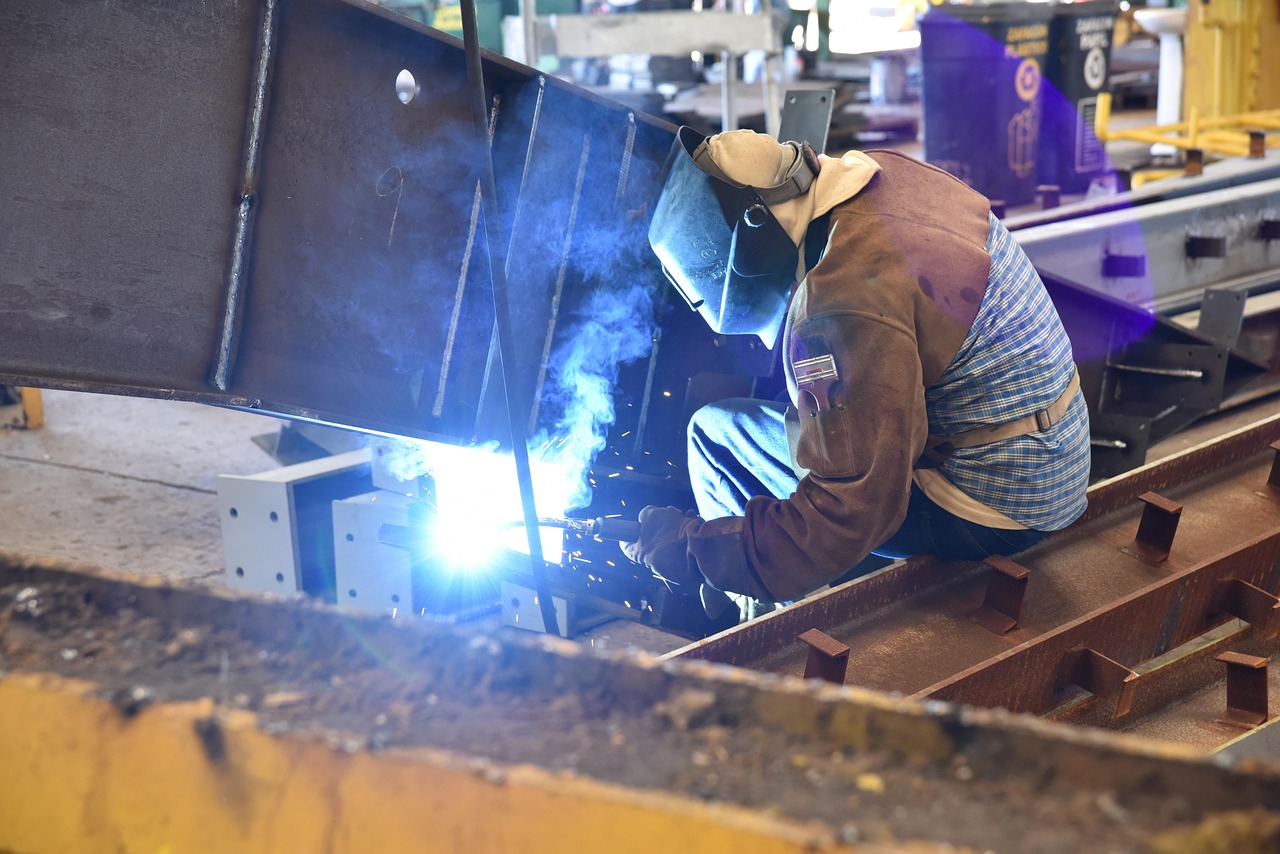Thousands of manufacturing jobs needed in WV according to Marshall survey – WV MetroNews

Report on West Virginia’s Manufacturing Labor Demand and Alignment with Sustainable Development Goals
Executive Summary
A study conducted by the Marshall University Advanced Manufacturing Center, surveying 83 manufacturers in West Virginia, reveals a significant demand for skilled labor. The findings project a need for 2,700 new full-time workers within the next 12 months and nearly 7,000 over the next three years. This demand presents a substantial opportunity for the state to advance several key United Nations Sustainable Development Goals (SDGs), particularly SDG 8 (Decent Work and Economic Growth), SDG 9 (Industry, Innovation, and Infrastructure), SDG 4 (Quality Education), and SDG 1 (No Poverty).
Labor Projections and Contribution to SDG 8: Decent Work and Economic Growth
The projected job growth directly supports the objective of achieving full, productive employment and decent work for all, a cornerstone of SDG 8. The creation of thousands of well-paying, stable manufacturing careers will stimulate the state’s economy and improve livelihoods.
Projected Hiring Needs: Next 12 Months
- Production/Operators: 1,035
- Laborers/Logistics: 309
- Quality Assurance and Testing: 251
- Maintenance Technicians: 241
- Machinists: 224
- Welders: 222
Projected Hiring Needs: Next 3 Years
- Production/Operators: 1,686
- Laborers/Logistics: 470
- Maintenance Technicians: 455
- Quality Assurance and Testing: 344
- Machinists: 317
- Welders: 274
This expansion is driven by new company establishments, the growth of existing firms like Toyota and Alcon, and natural turnover from retirements. Fulfilling this demand is critical for sustaining economic growth and productivity in the Mountain State.
Fostering Sustainable Industrialization and Innovation (SDG 9)
The demand for specialized roles such as machinists, welders, and maintenance technicians highlights the state’s move towards a more technologically advanced and sustainable industrial base, in line with SDG 9. The concentration of this growth in regions like the Huntington-Charleston metro area, alongside significant activity in the eastern and northern panhandles, indicates a broad-based industrial strengthening. Investment in these sectors, exemplified by major employers like Nucor and Timet, promotes inclusive and sustainable industrialization and fosters innovation across the state.
The Imperative for Skills Development and Quality Education (SDG 4)
The report underscores the critical need for a strategic response from the state’s educational institutions to meet this industrial demand, directly aligning with SDG 4’s emphasis on quality education and relevant skills for employment. As noted by Derek Scarbro, Director of the Marshall University Advanced Manufacturing Center, this data must serve as a catalyst for action.
- Enhance Vocational Training: Trade schools and community colleges must align curricula with the specific needs for machinists, technicians, and welders.
- Strengthen University Partnerships: Universities can collaborate with manufacturers to develop programs in advanced manufacturing, quality assurance, and logistics.
- Promote Lifelong Learning: Create pathways for the existing workforce to gain new skills required by an evolving manufacturing sector.
Successfully developing this talent pipeline is essential to filling these roles and ensuring that West Virginians can access these high-quality career opportunities.
Socio-Economic Impact and Progress Towards SDG 1 and SDG 10
The creation of nearly 7,000 well-compensated manufacturing jobs has a direct and profound impact on reducing poverty (SDG 1) and inequalities (SDG 10). By providing stable household incomes, this employment boom can lift thousands of families out of economic precarity. Furthermore, the geographic distribution of these opportunities across various counties, including Wayne, Mason, Kanawha, Jackson, Putnam, and Cabell, helps ensure that economic benefits are shared more broadly, contributing to the reduction of regional inequalities within the state.
1. Which SDGs are addressed or connected to the issues highlighted in the article?
-
SDG 8: Decent Work and Economic Growth
The article’s primary focus is on job creation and economic development within West Virginia’s manufacturing sector. It discusses the need for thousands of new full-time workers in “good-paying careers,” which directly contributes to achieving full and productive employment and fostering local economic growth. The article states, “If we as a state can realize this opportunity and help these companies fill these positions, we’ll really be making a big impact on our economy.”
-
SDG 4: Quality Education
The article explicitly connects the demand for workers with the need for education and training. It highlights the role of educational institutions in preparing the workforce. Derek Scarbro states the data should be a “driving force for trade schools, universities, community colleges, and others to step up and train the next generation of manufacturing workers.” This directly relates to providing relevant vocational and technical skills for employment.
-
SDG 9: Industry, Innovation and Infrastructure
The discussion centers on the growth and needs of the manufacturing industry. The expansion of existing companies like Toyota and Alcon, the arrival of new ones like Nucor and Timet, and the overall demand for 7,000 workers signify a push towards industrialization and increasing the manufacturing sector’s contribution to employment and the state’s economy.
2. What specific targets under those SDGs can be identified based on the article’s content?
-
Target 8.5: By 2030, achieve full and productive employment and decent work for all women and men… and equal pay for work of equal value.
The article directly addresses this target by identifying a specific need for “an additional 2,700 full-time workers over the next 12 months and nearly 7,000 over the next three years.” The emphasis on these being “good-paying careers” and a “good career path to pursue” aligns with the goal of providing decent work.
-
Target 4.4: By 2030, substantially increase the number of youth and adults who have relevant skills, including technical and vocational skills, for employment, decent jobs and entrepreneurship.
This target is identified through the call to action for educational institutions. The article states, “It’s really a strong emphasis for us to get to work harder and help people gain the skills they need to fill these jobs.” The specific job categories mentioned, such as “maintenance technicians,” “machinists,” and “welders,” are clear examples of the technical and vocational skills required.
-
Target 9.2: Promote inclusive and sustainable industrialization and, by 2030, significantly raise industry’s share of employment and gross domestic product…
The article’s data on the significant number of new jobs being created exclusively within the manufacturing sector points directly to this target. Filling nearly 7,000 jobs in manufacturing would inherently “raise industry’s share of employment” in West Virginia, supporting the goal of promoting industrialization.
3. Are there any indicators mentioned or implied in the article that can be used to measure progress towards the identified targets?
-
Indicator for Manufacturing Employment Growth (related to Target 9.2)
The article provides precise quantitative data that can serve as a direct indicator of manufacturing employment growth. The numbers “2,700 full-time workers over the next 12 months” and “nearly 7,000 over the next three years” are specific metrics to track progress in increasing the industry’s share of employment.
-
Indicator for Skills Gap in Vocational Trades (related to Target 4.4)
The survey results offer a detailed breakdown of the skills gap. The specific numbers for needed positions like “241 maintenance technicians, 224 machinists and 222 welders over the next year” act as indicators of the demand for particular vocational skills. Progress can be measured by tracking the number of people trained and placed in these specific roles.
-
Indicator for Job Creation and Unemployment Reduction (related to Target 8.5)
The total number of job openings (7,000 over three years) is a clear indicator of progress towards achieving full and productive employment. The article implies that filling these roles would have a significant positive impact, stating, “Just imagine another 7,000 families with a good paying job in the household… It would do a lot for our state.” This suggests a direct correlation between filling these jobs and reducing unemployment.
4. Create a table with three columns titled ‘SDGs, Targets and Indicators” to present the findings from analyzing the article.
| SDGs | Targets | Indicators |
|---|---|---|
| SDG 8: Decent Work and Economic Growth | Target 8.5: Achieve full and productive employment and decent work for all. |
|
| SDG 4: Quality Education | Target 4.4: Substantially increase the number of youth and adults who have relevant skills, including technical and vocational skills, for employment. |
|
| SDG 9: Industry, Innovation and Infrastructure | Target 9.2: Promote inclusive and sustainable industrialization and significantly raise industry’s share of employment. |
|
Source: wvmetronews.com
What is Your Reaction?
 Like
0
Like
0
 Dislike
0
Dislike
0
 Love
0
Love
0
 Funny
0
Funny
0
 Angry
0
Angry
0
 Sad
0
Sad
0
 Wow
0
Wow
0
















































/environment-climate-change-and-health-(ech)/water-sanitation-hygiene-and-health-(wsh)/landfill-tuvalu-36092.tmb-1200v.jpg?sfvrsn=5c21fe40_1#)

.jpg.webp?itok=0ZsAnae9#)
























